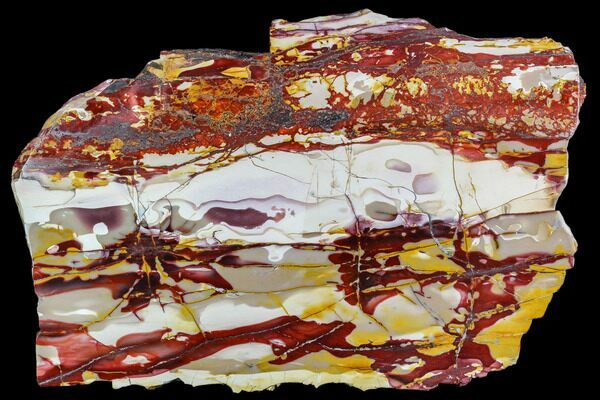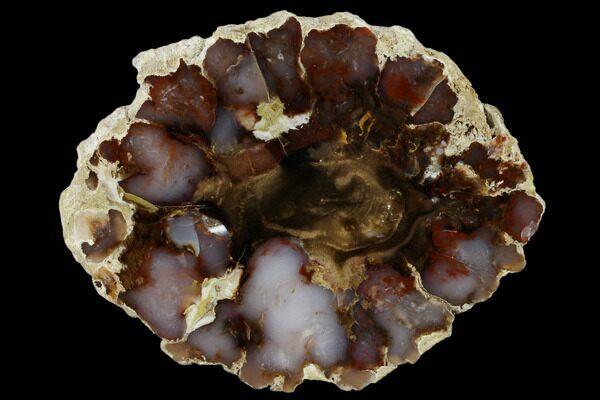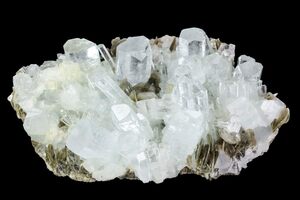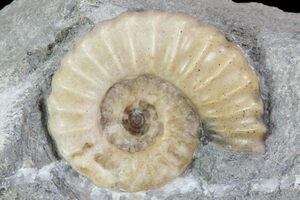Agate, Chalcedony & Jasper - What’s the Difference?
Chalcedony is a broad term to describe a microcrystalline form of silica. Agate is any type of chalcedony which is translucent, while jasper is any type of chalcedony which is opaque.
Chalcedony is any microcrystalline variety of silica composed of very fine intergrowths of quartz and moganite. Microcrystalline meaning the crystals are microscopic and cannot be observed by the naked eye. Both quartz and moganite have the same chemical formula SiO2 (silicon dioxide) but different crystal structures. More on moganite later.
When free from impurities, chalcedony is colorless and transparent. Dependent on impurities present during formation, chalcedony can form in a wide variety of colors including red, yellow, green, blue, purple, grey, white and numerous color hues in between.
Chalcedony is quite hard, being a 7 on the Mohs Hardness Scale, which makes sense considering quartz is the benchmark mineral for a 7.
The term agate may generally be used to describe any form of chalcedony that is translucent (light will pass through it). Like chalcedony, it may form in a huge variety of colors and patterns. Some people insist to strictly use the term agate to describe translucent chalcedony with circular banding patterns, but this stricter definition is not in general use.
It forms when a silica-rich, gelatin-like solution fills an open cavity within rock and begins to deposit crystals evenly along the walls. This deposition occurs molecule by molecule, forming tightly packed fibrous microcrystalline quartz crystals that line the contact walls of the cavity. Depending on impurities present during formation, the agate will exhibit varied coloration as the impurities work their way into the crystal lattice. In some cases this can result in concentric banding within a nodule, or layered formations within cracks (seams, vugs, veins, etc.) of rocks. Agate can also form within cavities of fossilized remains, explaining why many fossils are agatized.
Nodular or geodic agate formations occur in bubbles within the host rock that were created during volcanic activity. These bubbles within the rock formed as a result of rapid gas formation from expansion of volatile components. They moved their way up through the rock as it was still in a viscous state. Eventually the gas escaped through the rock following the rock solidifying and cracking. Mineral-rich water then made its way into the hollow cavity and provided the necessary minerals were present, agate could then form within the cavity. These agate formations occur throughout the world in locations where volcanic activity has created these environments, explaining why agate nodules and geodes can be found on every continent.
Jasper is a term that can be applied to an opaque variety of chalcedony (light does not pass through it) The opaqueness is due to a much larger amount of impurities mixed with silica/quartz. Like agate it may form in a huge variety of colors, and is often multi-colored.
In most cases, jasper will occur when silica-rich fluids permeate throughout a soft sedimentation or volcanic debris deposit. The fluids then crystallize around the particles/impurities, resulting in a cementation process. Most often, the impurities present determine the coloration of the deposit following solidification, however other factors can play a role in the color of what is now considered a jasper.
The easiest visible identifier for dissociation between agate and jasper is the mineral’s “diaphaneity”. Diaphaneity is described as the way light interacts with the surface of a substance. When light can pass through a substance without distortion or disturbance, the substance is considered transparent. When light can pass through the substance but in a distorted fashion, the substance is categorized as translucent. When light cannot pass through the surface of the substance, it’s classified as being opaque.
Some agates are diaphanous, meaning the image on the opposite side of the agate is clear and not very distorted, however in most cases translucency is the best classification for agate. The composition of the agate will play a role in the diaphaneity and translucency of the specimen, with less impurities resulting in higher transparency/translucency and more impurities hindering the ability for light to pass through. When too many impurities are present and light can no longer pass through, basically this is when the chalcedony is considered to be a jasper.
Agate and jasper often form in the same environment so it is not uncommon for a single rock to contain both agate and jasper. Portions of it are translucent (agate) and portions are opaque (jasper)
Moganite is the unofficial name for a microcrystalline polymorph of quartz that was first identified in 1994. It has the same chemical composition of quartz, bearing the chemical formula SiO2, however it forms in the monoclinic system as opposed to the hexagonal system of quartz. The first studied and identified moganite specimens were collected near Mogan in the Canary Islands off the northwest coast of Africa. Since then, various agate, jasper, chert and other silicate based mineral formations have been tested and found to contain moganite intertwined along with the quartz. So, the presence of moganite along with the quartz is a defining characteristic of chalcedony/agate/jasper.
Chert
Chert fits into the category of jasper for it forms from sedimentary processes where silica-rich solution precipitate through the sediment and solidify it into a solid mass. Chert is often opaque, brown-tan in color and is still composed of a combination of microcrystalline quartz and the particles present within the sediment.
Onyx
Onyx is a variety of translucent chalcedony with parallel banding. Some people would also consider it a form of agate while others prefer a stricter definition of agate having circular banding, making onyx its own distinct thing.
Much of the onyx found on the market, while labeled as onyx or banded onyx, is actually banded calcite or aragonite. Even though the two are very similar in appearance, onyx is a silicate with the general chemical formula of SiO2 while aragonite/calcite are both carbonates with the general chemical formula CaCO3.
Carnelian & Sard
Both carnelian and sard are red varieties of chalcedony colored by impurities of iron oxide. As both are typically translucent they are also technically agates.
Petrified Wood
In most instances, petrified wood has had its organic matter replaced with chalcedony. Since most petrified wood is opaque it can also be technically classified as a type of jasper, or called jasperized wood. Some petrified wood will also have pockets of translucent agate.
Trade names often get applied to various stones that may not be technically correct even using the broadest definitions for agate and jasper. Here are a few examples.
“Bumblebee Jasper”
Bumblebee jasper is the trade name for a colorful type of rock that is known only to form within Mount Papandayan in Indonesia. It forms as a precipitate within cavities of the surrounding limestone by hydrothermal activity. While portions of “bumblebee jasper” do in fact show layers of what appear to be jasper and/or agate, neither are actually present in significant amounts within this stone. The colorless portions of this mineral aggregation are actually fibrous calcite that gained its elemental components from the surrounding limestone and hydrothermal activity. The yellow and orange colors can be attributed to finely dispersed realgar and orpiment, while the black coloration is a result of pyrite.
“Green Tree Agate”
Green tree agate is the trade name for a type of stone with green, moss-like inclusions. It’s chalcedony but because it’s opaque it is technically jasper, not agate. So, the technically correct name should be green tree jasper.
“Dalmatian Jasper”
Dalmation jasper is the name for a white-yellowish stone with black spots. It’s igneous rock composed of arfvedsonite, albite and quartz and thus not jasper or chalcedony.
What is Chalcedony?
Chalcedony is any microcrystalline variety of silica composed of very fine intergrowths of quartz and moganite. Microcrystalline meaning the crystals are microscopic and cannot be observed by the naked eye. Both quartz and moganite have the same chemical formula SiO2 (silicon dioxide) but different crystal structures. More on moganite later.
When free from impurities, chalcedony is colorless and transparent. Dependent on impurities present during formation, chalcedony can form in a wide variety of colors including red, yellow, green, blue, purple, grey, white and numerous color hues in between.
Chalcedony is quite hard, being a 7 on the Mohs Hardness Scale, which makes sense considering quartz is the benchmark mineral for a 7.
What is Agate?
The term agate may generally be used to describe any form of chalcedony that is translucent (light will pass through it). Like chalcedony, it may form in a huge variety of colors and patterns. Some people insist to strictly use the term agate to describe translucent chalcedony with circular banding patterns, but this stricter definition is not in general use.
It forms when a silica-rich, gelatin-like solution fills an open cavity within rock and begins to deposit crystals evenly along the walls. This deposition occurs molecule by molecule, forming tightly packed fibrous microcrystalline quartz crystals that line the contact walls of the cavity. Depending on impurities present during formation, the agate will exhibit varied coloration as the impurities work their way into the crystal lattice. In some cases this can result in concentric banding within a nodule, or layered formations within cracks (seams, vugs, veins, etc.) of rocks. Agate can also form within cavities of fossilized remains, explaining why many fossils are agatized.
Nodular or geodic agate formations occur in bubbles within the host rock that were created during volcanic activity. These bubbles within the rock formed as a result of rapid gas formation from expansion of volatile components. They moved their way up through the rock as it was still in a viscous state. Eventually the gas escaped through the rock following the rock solidifying and cracking. Mineral-rich water then made its way into the hollow cavity and provided the necessary minerals were present, agate could then form within the cavity. These agate formations occur throughout the world in locations where volcanic activity has created these environments, explaining why agate nodules and geodes can be found on every continent.
What is Jasper?
Jasper is a term that can be applied to an opaque variety of chalcedony (light does not pass through it) The opaqueness is due to a much larger amount of impurities mixed with silica/quartz. Like agate it may form in a huge variety of colors, and is often multi-colored.
In most cases, jasper will occur when silica-rich fluids permeate throughout a soft sedimentation or volcanic debris deposit. The fluids then crystallize around the particles/impurities, resulting in a cementation process. Most often, the impurities present determine the coloration of the deposit following solidification, however other factors can play a role in the color of what is now considered a jasper.
Visible Differences Between Agate and Jasper
The easiest visible identifier for dissociation between agate and jasper is the mineral’s “diaphaneity”. Diaphaneity is described as the way light interacts with the surface of a substance. When light can pass through a substance without distortion or disturbance, the substance is considered transparent. When light can pass through the substance but in a distorted fashion, the substance is categorized as translucent. When light cannot pass through the surface of the substance, it’s classified as being opaque.
Some agates are diaphanous, meaning the image on the opposite side of the agate is clear and not very distorted, however in most cases translucency is the best classification for agate. The composition of the agate will play a role in the diaphaneity and translucency of the specimen, with less impurities resulting in higher transparency/translucency and more impurities hindering the ability for light to pass through. When too many impurities are present and light can no longer pass through, basically this is when the chalcedony is considered to be a jasper.
Agate and jasper often form in the same environment so it is not uncommon for a single rock to contain both agate and jasper. Portions of it are translucent (agate) and portions are opaque (jasper)
What is Moganite?
Moganite is the unofficial name for a microcrystalline polymorph of quartz that was first identified in 1994. It has the same chemical composition of quartz, bearing the chemical formula SiO2, however it forms in the monoclinic system as opposed to the hexagonal system of quartz. The first studied and identified moganite specimens were collected near Mogan in the Canary Islands off the northwest coast of Africa. Since then, various agate, jasper, chert and other silicate based mineral formations have been tested and found to contain moganite intertwined along with the quartz. So, the presence of moganite along with the quartz is a defining characteristic of chalcedony/agate/jasper.
Other Variations
Chert
Chert fits into the category of jasper for it forms from sedimentary processes where silica-rich solution precipitate through the sediment and solidify it into a solid mass. Chert is often opaque, brown-tan in color and is still composed of a combination of microcrystalline quartz and the particles present within the sediment.
Onyx
Onyx is a variety of translucent chalcedony with parallel banding. Some people would also consider it a form of agate while others prefer a stricter definition of agate having circular banding, making onyx its own distinct thing.
Much of the onyx found on the market, while labeled as onyx or banded onyx, is actually banded calcite or aragonite. Even though the two are very similar in appearance, onyx is a silicate with the general chemical formula of SiO2 while aragonite/calcite are both carbonates with the general chemical formula CaCO3.
Carnelian & Sard
Both carnelian and sard are red varieties of chalcedony colored by impurities of iron oxide. As both are typically translucent they are also technically agates.
Petrified Wood
In most instances, petrified wood has had its organic matter replaced with chalcedony. Since most petrified wood is opaque it can also be technically classified as a type of jasper, or called jasperized wood. Some petrified wood will also have pockets of translucent agate.
When Trade Names Get Confusing
Trade names often get applied to various stones that may not be technically correct even using the broadest definitions for agate and jasper. Here are a few examples.
“Bumblebee Jasper”
Bumblebee jasper is the trade name for a colorful type of rock that is known only to form within Mount Papandayan in Indonesia. It forms as a precipitate within cavities of the surrounding limestone by hydrothermal activity. While portions of “bumblebee jasper” do in fact show layers of what appear to be jasper and/or agate, neither are actually present in significant amounts within this stone. The colorless portions of this mineral aggregation are actually fibrous calcite that gained its elemental components from the surrounding limestone and hydrothermal activity. The yellow and orange colors can be attributed to finely dispersed realgar and orpiment, while the black coloration is a result of pyrite.
“Green Tree Agate”
Green tree agate is the trade name for a type of stone with green, moss-like inclusions. It’s chalcedony but because it’s opaque it is technically jasper, not agate. So, the technically correct name should be green tree jasper.
“Dalmatian Jasper”
Dalmation jasper is the name for a white-yellowish stone with black spots. It’s igneous rock composed of arfvedsonite, albite and quartz and thus not jasper or chalcedony.
 Reviews
Reviews












